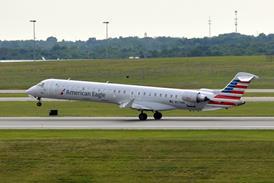Graham Warwick/WASHINGTON DC
Lockheed Martin and Boeing are rejigging the F-22 Raptor flight test programme in a bid to achieve the milestones that must be completed for low-rate initial production (LRIP) to be approved next month, as planned.
As of early November, the team had completed only six of 15 criteria for LRIP approval, but several others were almost achieved. The latest milestone to be accomplished is 2,150 cycles of endurance testing on the F-22's Pratt & Whitney F119, half the engine's full hot-section life.
Boeing, meanwhile, has delivered an engineering version of Block 3.0 avionics software to Lockheed Martin for the fifth flight-test aircraft, Raptor 4005. In a change to the original plan, the team now intends to accomplish the most challenging milestone, flying Block 3.0 in the F-22 itself, using the Raptor 4005 and not 4004 - the first test aircraft.
The change was made to save time and because of delays in flying 4004. Raptor 4005 is expected to fly later this month and, if 4006 flies as scheduled in December, the team will have met the requirement to fly four aircraft this year.
Lockheed Martin is waiting for confirmation that it has accomplished another of the milestones, mating of the major airframe sections of aircraft 4008. The company is also close to completing static tests and beginning fatigue tests, both criteria for LRIP approval.
As required, the team has completed the critical design review on the next block of software, 3.1, and is preparing for the final air vehicle production readiness review. The final milestone, which has yet to be accomplished, is to initiate radar cross-section testing.
Source: Flight International























